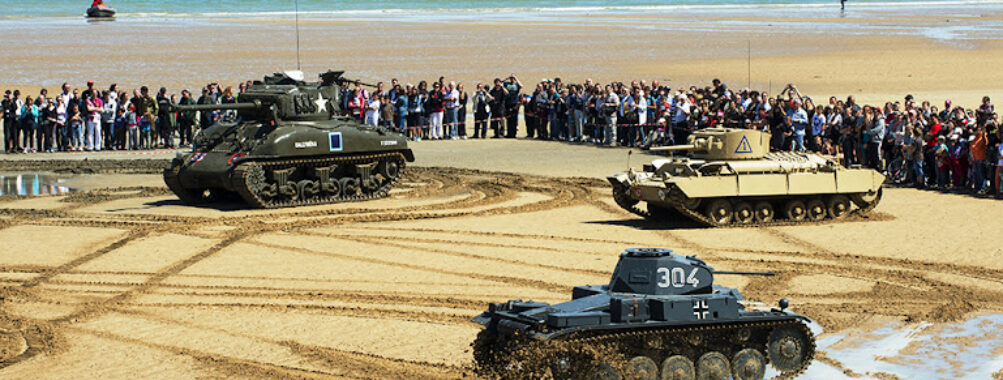
Beaches of Normandy Tours
Table of Contents
Description
Stepping onto the Beaches of Normandy is like opening a living history book — but one that hits you right in the heart. These tours don’t just skim the surface; they plunge you deep into the pivotal moments of World War II, focusing especially on the American heroism that shaped the course of history. It’s not your typical sightseeing trip where you snap a few photos and move on. Instead, you get to walk the sands where thousands fought and fell, stand in solemn silence at the American Cemetery, and explore museums that tell stories you won’t find in textbooks.
What really sets these tours apart is how they blend history with humanity. The guides aren’t just reciting dates and facts; they bring the events to life with personal anecdotes, letters from soldiers, and vivid descriptions that make you feel like you’re right there in 1944. And it’s not all about the beaches — the tours often include visits to other significant WWII sites across Europe, like the Battle of Britain locations, Bastogne, and even the Bavarian Alps, painting a full picture of the war’s vast scope.
As a women-owned operation, there’s a unique touch of care and passion in how these tours are run. Accessibility is thoughtfully handled too, with wheelchair accessible parking and a smooth experience for all travelers. Whether you’re a history buff, a family wanting to connect with the past, or someone who simply wants to pay respects, these tours offer a respectful, immersive, and unforgettable journey.
Key Features
- Guided visits to all five Normandy landing beaches spanning a 55-mile stretch
- Expert local guides sharing detailed WWII history and personal soldier stories
- Access to iconic sites such as Omaha, Juno, and Utah beaches, plus the American Cemetery at Colleville-sur-Mer
- Flexible tour lengths: from a focused one-day trip to comprehensive three or four-day immersions
- Inclusion of other European WWII landmarks beyond Normandy for a broader historical context
- Wheelchair accessible facilities and parking for ease of mobility
- Payment convenience with credit card acceptance
- Women-owned business emphasizing respectful commemoration and educational impact
Best Time to Visit
Timing your visit to the Beaches of Normandy can really shape your experience. The late spring through early fall months, roughly May to September, tend to be the sweet spot. The weather is generally mild and less rainy, which makes walking the beaches and exploring outdoor memorials much more pleasant. Plus, the longer daylight hours let you soak up more of the sites without feeling rushed.
But heads up — summer can get a bit busy, especially around the anniversary dates of D-Day in early June. If you prefer a quieter, more reflective atmosphere, consider visiting just before or after the peak season. Autumn brings a peaceful vibe with fewer crowds and stunning fall colors that add a different kind of beauty to the landscapes. Winter, while less crowded, can be chilly and wet, so pack accordingly if you go then.
How to Get There
Getting to Normandy is easier than you might think, but it does require a bit of planning. Most travelers fly into Paris Charles de Gaulle or Orly airports first. From there, renting a car or hopping on a train is the way to go. The train ride from Paris to Caen or Bayeux, the main gateway towns to the beaches, takes about two hours and offers a scenic introduction to the French countryside.
If you’re not big on driving abroad, many tour operators offer packages that include transportation from Paris, so you can just sit back and enjoy the ride without worrying about directions or parking. For those who prefer a more independent trip, renting a car gives you the freedom to explore at your own pace — maybe even detouring to some lesser-known WWII sites or charming nearby villages.
Tips for Visiting
First off, wear comfortable shoes. You’ll be walking a lot — on sand, cobblestones, and sometimes uneven terrain. Trust me, fancy footwear won’t cut it here. Also, bring a weatherproof jacket because Normandy’s weather can be unpredictable; one minute it’s sunny, the next you’re caught in a drizzle.
Don’t rush through the sites. The power of this place lies in its stories and atmosphere, so take time to absorb the surroundings, read the plaques, and listen to your guide. And if you’re visiting the American Cemetery, try to be there during the flag ceremony if possible — it’s a moving experience that really hits home the sacrifice made.
One thing a lot of visitors don’t realize is how much the nearby towns like Bayeux add to the experience. The Bayeux Tapestry Museum, for example, gives fascinating context to the Norman history that predates WWII but shaped the region’s identity. So, carve out some extra time to explore these towns.
Finally, bring a notebook or a voice recorder if you like to capture your thoughts and reflections. Many find that the emotional weight of the visit lingers long after they leave, and having your own notes can help you process and share the experience later.
All in all, a Beaches of Normandy tour isn’t just a trip — it’s a deeply personal journey through history, courage, and memory. If you’re ready to step beyond the usual tourist trail and connect with a story that changed the world, this is where you want to be.
Location
Places to Stay Near Beaches of Normandy Tours
Find and Book a Tour
Explore More Travel Guides
No reviews found! Be the first to review!